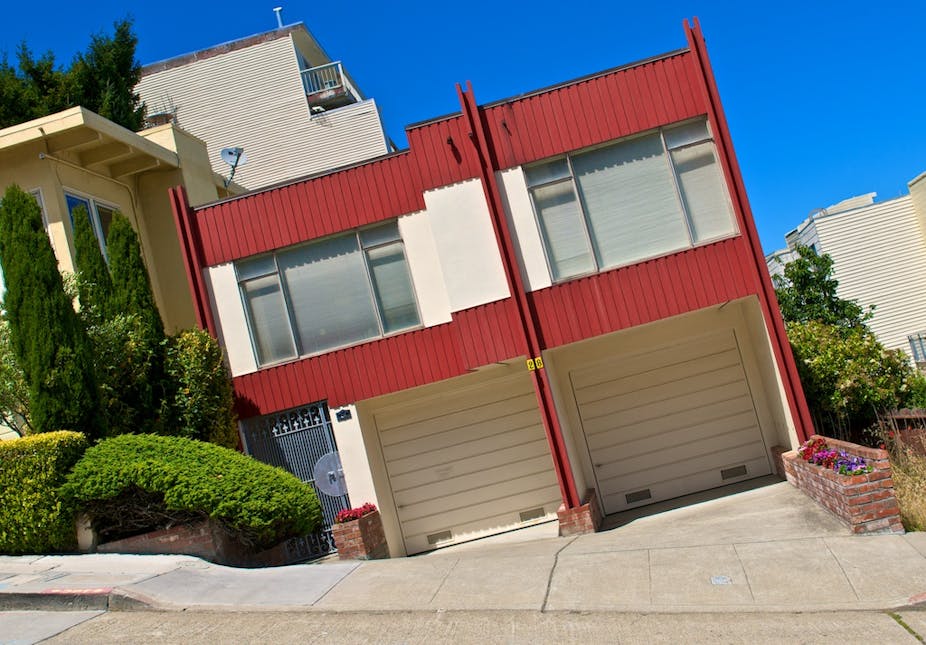There is a nice weather map cartoon by Matt featuring the UK characterised by the varied intensity of dinner table house price conversation. And it is not just that we are obsessed with property values. The dysfunctional national fixation both reflects and is reflected by media and professional hyperbolic language concerning what is going on in local and national housing markets.
For many years, my colleague Tony O'Sullivan and I ran courses for planners on practical housing market analysis. We regularly ran a workshop deconstructing newspaper house price stories as a way to make people more critical of data and more aware of the interests lying behind such stories. We were regularly told that this was also an effective way of breaking out of the mindset that rising house prices are “good” in some sense and that volatility and other housing ills were inevitable (a quick tour of international housing markets can also quickly put paid to that notion).
It is in this context that I approach the recent flurry of house price statistics that some have claimed indicate evidence of a turning point, a slowing down or a correction.
Slowing, but growing
The Nationwide’s UK house prices October 2014 report was headlined “annual house price growth continues to soften”. This was after a monthly increase (seasonally adjusted) of 0.5%, up from a 0.1% fall in September. The annual growth figure was 9.0%, down from 9.4% in September. The report then goes on to draw on corroborating evidence for a (modest) slowdown – but a slowdown in growth – so house prices are still rising by four times the rate of inflation, just not as quickly as they were. However, the forces said to be acting on house prices can be seen as working in both directions (and this does not appear to be formally modelled).

Earlier this week, the ONS house price statistics were published for the year to the end of September 2014. These suggested annual UK house price inflation of 12.1%, up from 11.7% for the 12 months to the end of August. Price increases were in double figures in England (12.5%) and the now-recovering Northern Ireland (10.9%) but less dramatic (though still substantial real-terms gains) in Scotland (7.6%) and Wales (5.8%).
Both Nationwide and ONS make serious attempts with large sample mortgage transactions data to quality adjust for the mix in properties. They are tried-and-tested approaches.
A different approach is provided by Rightmove. Their property blog this week reports market movements inferred by estate agent business, the prices of property coming on the market and whether they are rising or falling – and the volume of online visits. This is clearly useful additional information about market sentiment and activity but it is also about doing explicit estate agency marketing business (which is fair enough). It also reports that while prices coming on the market have slipped back by 1.7% in the current month, nonetheless overall annual house prices are 8.5% higher.
Finally, the official housebuilding figures added to our picture in England – 116,000 units completed in the year to September, up 8%. That represents a positive outcome, but still well below the widely agreed figure of 200,000-plus required year-on-year. It is also the case, however, as pointed out by the Chartered Institute of Housing, that the building figures actually fell by 10% in the final quarter of that 12 month period.
Plausibility
What are we to make of it? How do we get behind these numbers? We need to work out just what does the idea of a national market actually means except as a crude aggregate indicator – housing markets after all are fundamentally local, spatial and inherently complex. Also, house prices are exemplars of the difficulty in measuring the reality of underlying trends because homes are fundamentally idiosyncratic and individualised (and need rigorous quality adjustment so we can compare like with like).
I think we should always approach these house price stories by adopting the following checklist of tests:
- What type of house price data is being used: what time period is being compared, at which geographic scale, what is the sample size and how representative is it, how is differential quality adjusted for, are we measuring prices in real or nominal terms and are we using prices or indices?
- Re-read the analysis removing all descriptive adjectives and adverbs and root out all hyperbole.
- Identify all assumptions about the housing system. My preference, for what it is worth, is that we should aim for real house price growth of zero per cent, that is that house prices grow at the same rate as general prices over the long term.
- Can we, looking at the data, see a genuine pattern or trend in the data, or is it just noise?
- Is there a plausible narrative and one that is as rigorous as the data would allow?
Here is the crux. If we apply these tests to the numbers we have seen recently, then it is clear that rising real house prices mean that housing relative to everything else is still getting more expensive and less affordable.
The figures above, though by no means identical, suggest the house prices are still rising at several times the rate of general prices and this is now occurring widely across the UK. Calling this a correction misses the point – it is not the “plausible narrative” we seek. Just ask Generation Rent.

